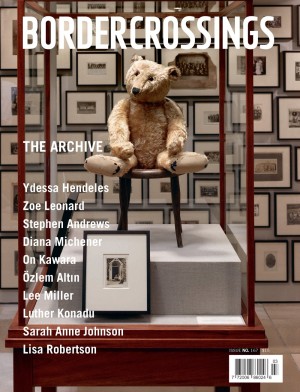Crossovers
-
Carolee Schneemann
The amount of video around these days is reaching the point of saturation. A friend, a video artist and educator in the UK, tells me that it’s become the fallback position in the art schools-if you can’t think of anything else to do, you make a video. Lately I’ve had a growing desire to see something I’d call “extreme video,” which means I’d have to strap on the gear and scale a 30-metre wall to see the monitor, or bungee jump into the abyss to find a screen waiting where my nose comes to a stop, before I snap back into the air. Then in November I attended a lecture by Carolee Schneemann, at the Montreal Museum of Fine Arts, as part of the “Global Village: the 60s” exhibition currently on view, where she talked about her body of work and screened her most recent video project. The new work pushed me over the edge in to a free fall, no gear, no parachute and no hope for a soft landing.
-
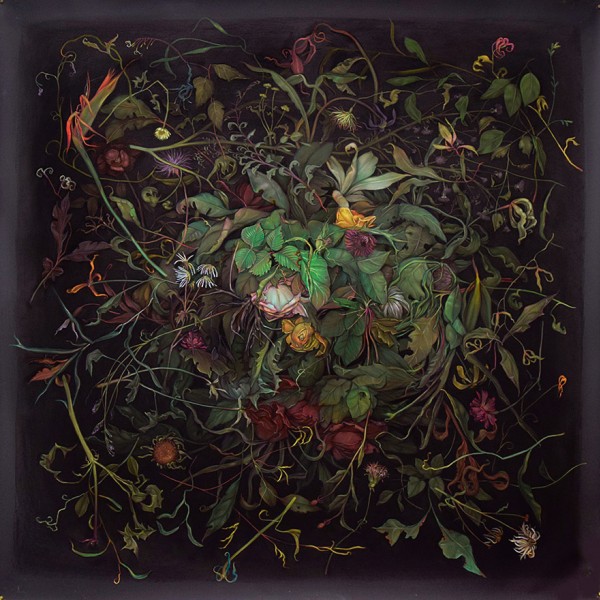
Ross Bleckner and Zachari Logan
A paladin of New York painting since the 1980s, Ross Bleckner has influenced countless younger artists with his works’ unimpeachable painterly chops, mournful sentimentality and imagery of pictorial space both vast and ethereal. One of these artists—as this handsome exhibition on the two floors of the University of Saskatchewan’s College Art Galleries was designed to demonstrate—Regina-based draftsman Zachari Logan, shares thematic interests with Bleckner, as well as his sense of romantic melancholy. Organized by the Galleries’ curator Leah Taylor with Wayne Baerwaldt, currently an independent curator based in rural Saskatchewan, the show offered examples of several of Bleckner’s aesthetic modes, which range from the abstractly representational to the representationally abstract. A 2018 four-foot-square canvas, Untitled, pictures pale flowers floating in a glimmering silvery green field; blurred out with a dry brush, the image suggests late Monet essayed by early Richter, except that instead of tapping into the nostalgic veracity of old photographs, Bleckner’s painting conjures a fey dream. Yet, a non-representational painting the same size appears the near double of Untitled. The dark ground of Crowd, 2016, features a number of soft-focus splotches that seem to glow from its depths, the points of light approximating the unmoored flowers and vice versa.
-
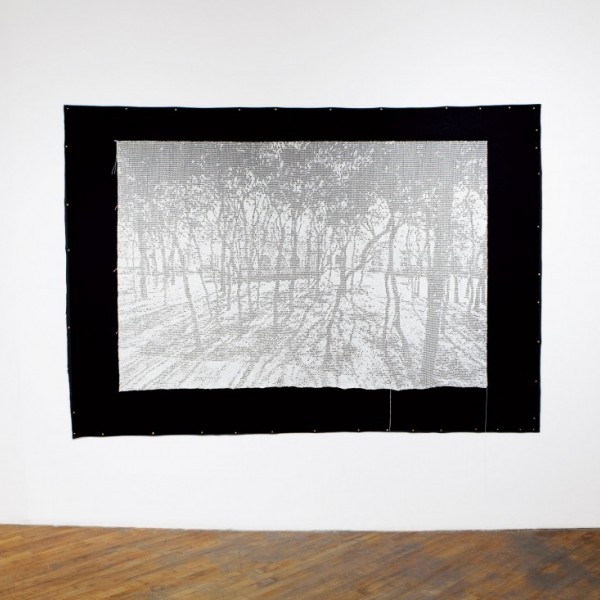
Steven Leyden Cochrane
“Shining Tapestry,” by Steven Leyden Cochrane, is an exhibition of works made over an 11-year period which includes large-scale crocheted lace “tapestries,” digitally altered images, and mixed media. It is more than just a collection of individual works; it is a window into a genealogy. The beauty of what is assembled reveals a multivalent layering of themes and associations—not merely surface resemblances, but echoes and whispers of ghost-like impressions. The works critically and poetically investigate inconsistencies of subjective experience, loss and the inefficacies of language.
-

“Soulèvements/Uprisings”
To someone whose research focuses on aerial perspectives, the notion of “uprising” has a particular weight to it. In taking stock of the world from above, you variously visualize a hierarchical system that is based on a vertical model, be it in the form of drone surveillance of contested territories or seeing skyscrapers from above. To describe an uprising in terms of weight may seem oxymoronic—“to rise” is to suggest a kind of weightlessness or a disobedience to the laws of gravity. However, an uprising is not weightless; it is heavy, corpulent, dense, and it is in this mass that it finds momentum. As Elias Canetti reminds us, “A large number of people together refuse to continue to do what, till then, they had done singly.”
-
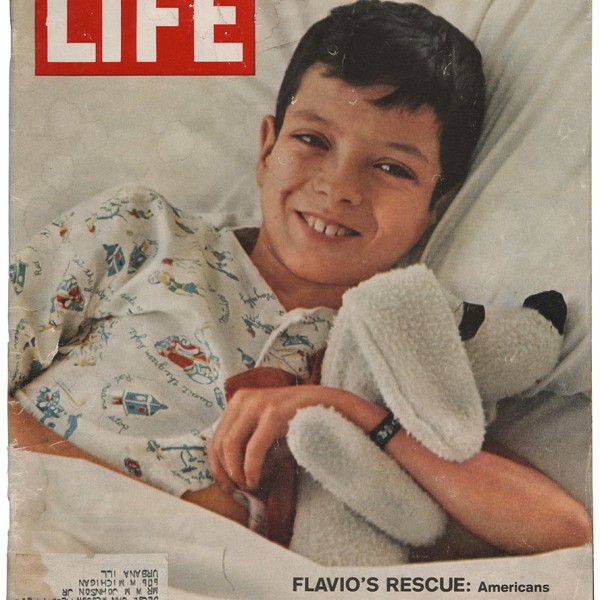
Gordon Parks
Gordon Parks (1912–2006) dedicated his seven-decade-long photographic career to exposing truth, injustice, poverty and inequality. He began photographing in the 1920s, and in the 1930s had won a Fellowship with the Farm Security Administration (FSA). His stark black and white documentary style was modelled on photographers whose work he admired, and developed further during his time with the FSA.
-

Anna Boghiguian
A huge canvas hangs in the atrium of Museum Rupertinum in Salzburg. This awkward site-specific installation, “Trade and Birds,” leads visitors into this retrospective-style exhibition, which showcases countless works, drawings, collages, artist’s books and installations, and concludes with a reproduction of one of Anna Boghiguian’s many artist’s studios.
-
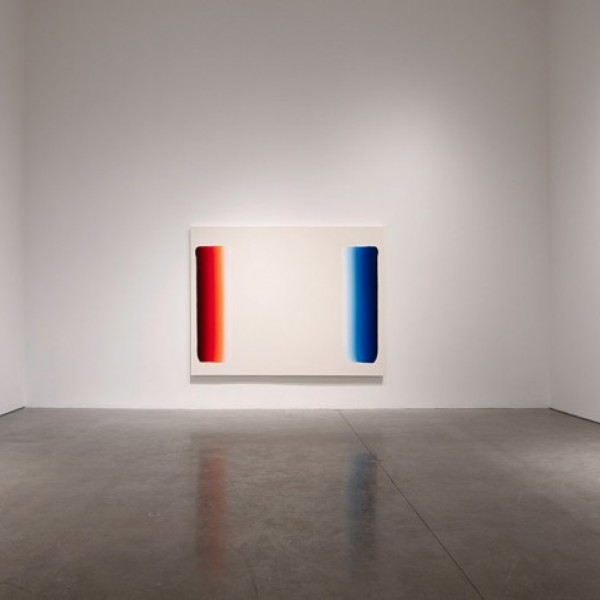
Lee Ufan
Lee Ufan is associated with two of the most important currents in the Asian art of the last half-century: Mono-ha or the “school of things” in Japan (as a participant and theorist); and (as a promoter and fellow traveller) Dansaekhwa or Korean monochrome painting—a “movement” that was recognized as such only in retrospect. But as with most outstanding artists, Lee has mostly gone his own way, and the only movement that’s been entirely relevant to his work has been the movement of his own thought. Not only a painter and sculptor but also a critic and theorist of art—his collection of writings in English translation, The Art of Encounter, 2008, is well worth seeking out—Lee was born in Korea in 1936, and in 1956 went to Japan to study philosophy (with a particular interest in phenomenology). He’s remained there since, though later spending part of his time in France as well.
-

Mika Rottenberg
Mika Rottenberg’s eccentric visual narratives use video and sculpture to create relations among seemingly unrelated economies, collapsing space, time and subjectivities. In her exhibition “Bowls Balls Souls Holes” at Sprueth Magers in Berlin, Rottenberg investigates the cyclical nature of luck under the auspices of capitalistic culture. Featuring her signature eccentricity, the exhibition analyzes and reveals the patterns of production and consumption while confusing the boundaries between interior and exterior.
-

“Through Lines”
Redaction (along with its bedfellows censorship and erasure) may be the archetypal bugbear of democracy—one only has to point to examples like Joseph Stalin’s excising disfavoured figures from Soviet history to stir up fears of state paternalism and oppression. Nevertheless, the increasingly fraught political and media landscape of today’s West may also be prompting a kind of redaction renaissance.
-

“Future Possible: Art of Newfoundland & Labrador to 1949”
How do you begin to write an art history and what are the vital questions to ask? Which marks are most prominent in the visual culture of a particular place, and which are nearly invisible? What narratives exist and why; where the gaps and erasures?
-
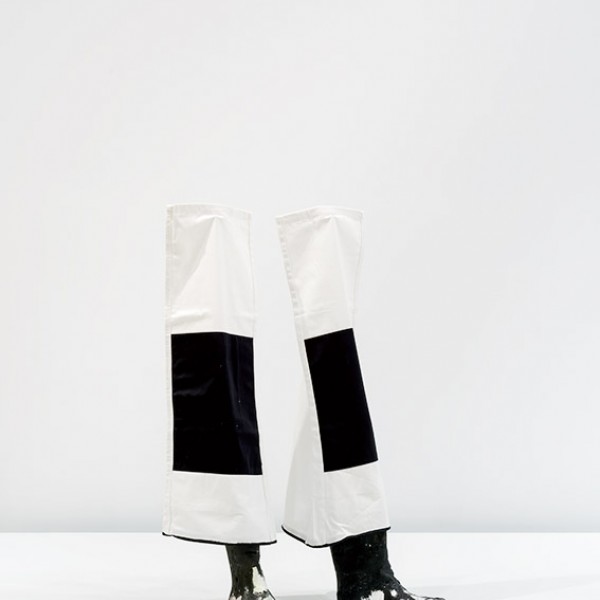
Walter Scott
Walter Scott’s recent exhibition, “Betazoid in a Fog,” at Saskatoon’s Remai Modern was a complicated mash-up of visual signs that hint at much but resist easy reading. Rather than neatly summing up the exhibition’s theme, its title introduces an offbeat element—Star Trek’s race of telepathic empaths, Betazoids—to create an analogy between reading artworks and reading minds.
-

“Days of Reading”
Plug In Institute of Contemporary Art’s “Days of Reading: beyond this state of affairs” is a tightly edited exhibition of objects, performances, works of sound and light performed on Nuit Blanche, panels, a book fair and lectures. Works by 14 artists are associated by syntactic flow, conceived through four themes: “Appropriated,” “Collecting,” “Cloaking” and “The Reveal”—adjectives, gerunds and nouns that get us on our way.
Haven’t found what you're looking for? Explore our index for material not available online.

